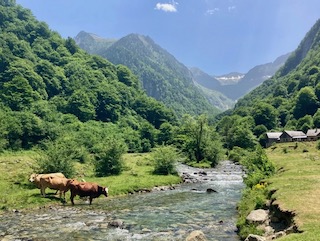After an unprecedented hot summer across much of Europe, there is no doubt that many of us are reviewing how and where we want to live in the future to deal with the sad reality of climate change. Raging wildfires, droughts, flooding, and dangerous high winds seem to be increasingly regular occurrences which can only lead to a greater emphasis not just on how we live but also where.
In the past, many people, particularly those from more northern climes, have dreamed of owning a house in the sunshine of the Côte D’Azur or amongst the lavender fields of Provence. Demand, however, is now strongly shifting towards regions with more rainfall and less extreme summer heat as everywhere gets hotter and drier and weather patterns more pronounced.
Of course, nowhere is immune from climate change but, when deciding where to buy a property, it is worth looking at the average temperatures throughout the year, particularly the peaks and troughs as well as the yearly rainfall in order to get an idea of the weather trends in the area. For example, if there are lots of wind farms on a ridge along a valley, you can be sure that there are no shortage of windy days, such as for example in parts of the Languedoc (where the Tramontane blows frequently) or the Provence region (where the Mistral blowing down the Rhone valley is famous for sending people mad).
Personally, I would also choose an area with predominantly pasture rather than crops (generally a sign of plenty of rainfall), mixed, natural forests (unlike regions where pine forest plantations have allowed wildfires to spread fast and uncontrollably this summer) and plenty of rivers and streams. And I like to see mountains on the horizon too because sometimes just the sight of snow on very hot days can make you feel cooler and we also benefit from lower night time temperatures thanks to the breeze trickling down from higher up.
In terms of choosing a house, for both extreme heat and cold, old stone properties have much better natural insulation thanks to the thick, stone walls meaning they stay much cooler in summer than new houses and also retain the heat in winter. Plus, shutters are not just to look pretty, they do a fantastic job of keeping the heat out or in depending on the time of year. A north facing terrace in summer is also vital; much as it is lovely to sit and face south, looking at the mountains in winter, in summer you will appreciate being able to relax in the shade on the northern side of the house.
So just a few more things to think about when choosing a region and a house either for a permanent home or a holiday house. If you would like some help or advice, please get in touch: nadia@foothillsoffrance.com






You must be logged in to post a comment.